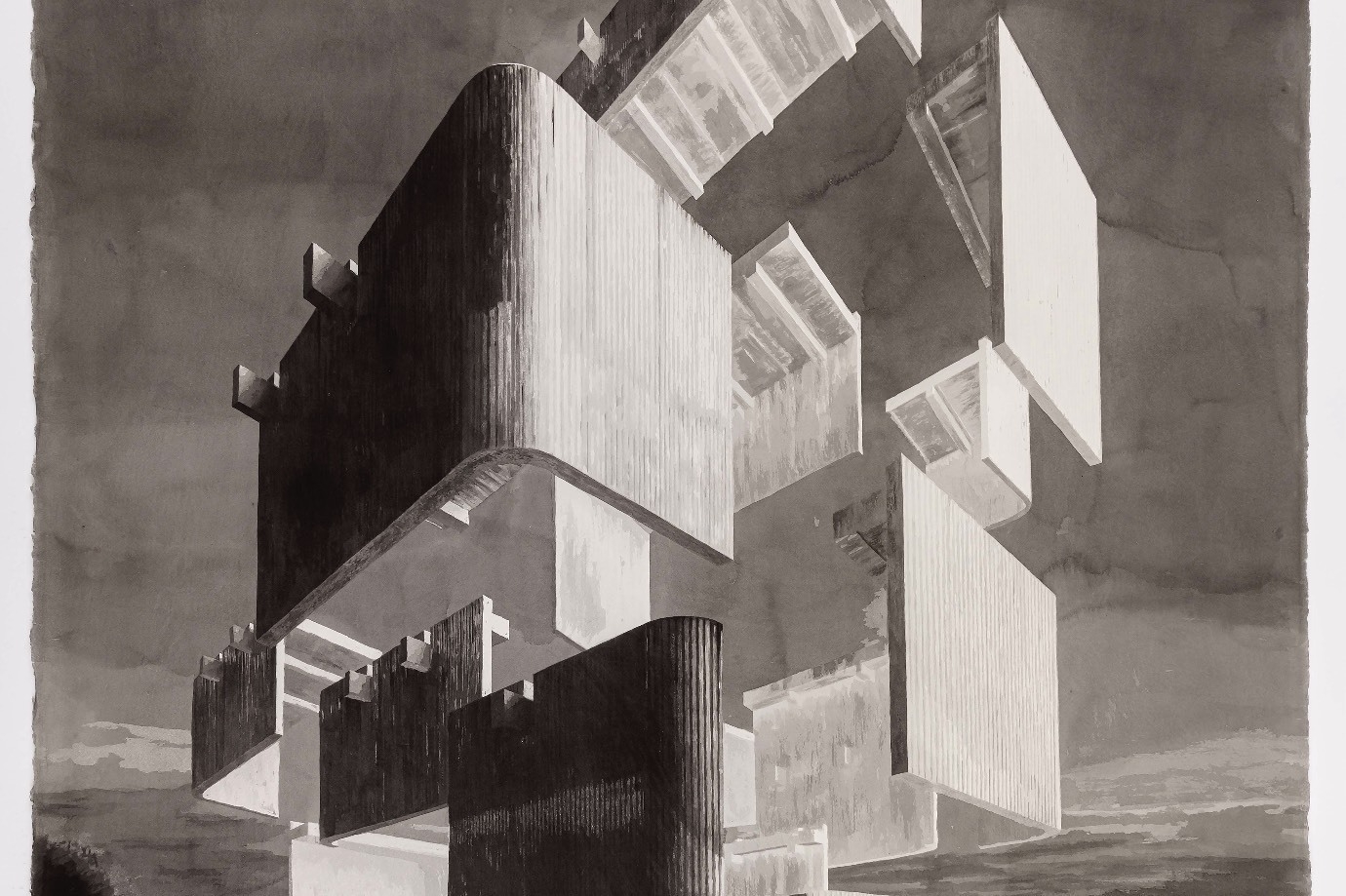The sculptural is the grammar of Dietrichson’s work. One recognizes the building masses. The way steel and bronze bend and submit to their own authority – the coils and curvatures of law. To be sculpture; Dietrichson belongs to that group of artists who always delve deeper into their own poetics, forcing it into ever more precise, ever more defined principles. In the silk screen prints at Galleri Haaken, we see architecture elevated to a kind of idea, as if we’re seeing its Platonic prototypes in the process of being realized into physical, concrete bodies. But here in reverse; Dietrichson dissolves the shared functionality of the different bodies, abstracting them into self-sufficient geometric formations of meaning. He drives the architectural into the realm of sculpture. Or, in other words: They are sculptures. This transformation, this opening up towards the metamorphosis of things, and thereby the concept of time itself, entails the loss of social practice, fundamental interface, and defined functional forms. What remains is the thing, the object, detached and free, in the world, or in what the philosopher Martin Heidegger would call its “being-there”, dasein – as opposed to its “what-being.” That this exists, as form, as object, overrides the fact that it should have a mission, a description of content or purpose. Dietrichson releases the structures, like carrier pigeons, liberated after long lives as parts of functional social form. Plus ultra; to work toward
Despite the absence of human references, Dietrichson’s works are driven by such an empathetic, humanist will to form. A will to be in the form. In the images, as in the ink washes and silverpoint works, the massive and dense are juxtaposed against a softer way of seeing the world. Here too, Dietrichson directs the interplay between the solidity of the motif and the lightness of the representational form – the two delicately balance around each other, now as in dance, then as in tension. The ink washes have just this quality of medium; to touch the form. The iconographic transfer between the various media Dietrichson explores is tested against each of them, researching their internal differences and similarities. This meditation on media manifests across the entire spectrum of Dietrichson’s works. The silverpoint works also become a gateway to drawing as a historically marked discipline; techniques enter and exit consciousness. But they can be picked up again, revitalized and reactualized, created anew. Silverpoint becomes in Dietrichson’s hands less a meeting with the object than the very delineation of light, circumscribed by the process. The very space of light itself.
This spectrum stretches from the analogue, tactile, and above all heavy presence of sculpture, to the weightless digital expressions of the silk screens and architectural collages; the world aesthetic Dietrichson describes in these images also captures the new reality of screen-living as a substitute for experience. The screen interface increasingly constitutes the reality principle for 2024 Man. Flatness has become the shape of reality. Here Dietrichson’s project is also anchored in the extension and revitalization of a kind of high modernist context of form. The images push and plunge against their own material limitations.
Art grows out of art. Although a name like Constantin Brâncuși lingers in the interplay between the concentrated curves and arches in Dietrichson’s sculptures, the work of the late Richard Serra especially is an invisible conversation partner in Nightsculpture: Density, weight, and monumentality were Serra’s currencies, and Dietrichson shows a related willingness to think with the medium, first and foremost – the medium, more than anything else. It is not in metaphor or psychological concentration they both find, or in Serra’s case, who passed away on March 26 of this year, found, their rhetoric, but rather in the object’s relationship to time and process, to materiality and its structural logic – the necessary act of always stripping language down to its bare minimum.
In “Nightsculpture,” Espen Dietrichson spurs his formal poetics towards an ever more essential state of being, an ever more precise grammar; towards what is always a way forward. This aesthetic identity work, the very space of formal negotiation, is not so much a journey towards an artistic vision of complete control as the realization of its never-ending task.
-Simen K. Nielsen




